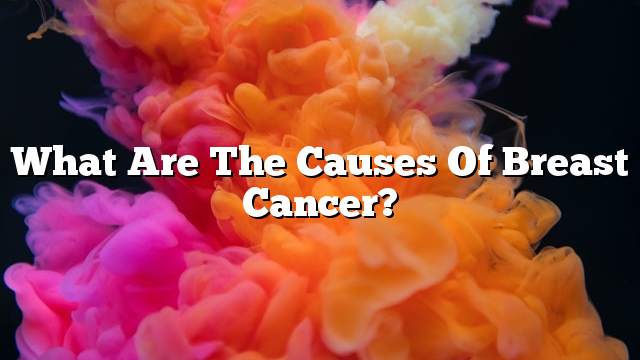breast cancer
Breast tumor occurs when the growth of breast cells increases beyond the control of the body. The tumor is malignant if these cells can invade neighboring tissues or spread and spread to other tissues and areas in the body , And then called tumor cancer. Breast cancer can start in several breast cells. The most common are the channels that carry milk to the nipple, which is called ductal cancer. Breast cancer may start in the glands, The milk is then called Lobular Cancer. Breast cancer affects women in most cases but may also affect men.
Symptoms of breast cancer
Breast cancer may not cause any symptoms at first, or the lump in the breast may be small and can not be felt or this block does not cause noticeable changes in the breast. Breast cancer is often observed Abnormal areas of Mammogram only, but this does not prevent cases where the patient feels a mass that the patient or doctor can touch. It is important to note that breast cancer lumps are mostly painless, stiff, and uneven. However, there are cases where the cancerous masses are round and soft, and for this reason it is very important to consult your doctor if you notice anything abnormal or Suspicion.
Symptoms and signs that can appear on the patient when they develop breast cancer include the following:
- Swelling of the entire breast or part of it.
- There are small clicks on the skin or irritation.
- Change in the shape of the nipple, or pain in it, or turning it inside.
- Redness of the nipple or breast, or the appearance of something resembling diaphragms on them, or an increase in the thickness of either.
- Exits of the nipple are different from milk.
- The presence of a lump or swelling in the area of the armpit or collarbone (Collarbone).
- Pain in the breast does not go away after the next menstrual period.
- Having a new lump in the breast does not go away after the next menstrual period.
- Increase the size of an existing block.
- The skin of the breast is transformed into orange peel.
- Pain in the vagina (Vagina).
- Intentional loss of weight.
- Lymph Nodes in the armpit region.
- The appearance of breast veins visually and clearly.
Diagnosis of breast cancer
Tests and procedures used to diagnose breast cancer include the following:
- Breast test: Breast examination is performed by the doctor to detect the presence of lumps or abnormal signs in the breasts and lymph nodes in the armpit area.
- Mammography: Mammogram is performed using X-ray, and if abnormal results are observed, a diagnostic mammogram is used to assess the problem more accurately. But it is important to know that breast radiography can not detect all breast cancer cases, so attention to any breast changes or the appearance of any symptom is very important.
- Breast screening using ultrasound: Breast implants are examined using breast ultrasound to determine the nature of the lumps formed in the breast, where they determine whether they are solid blocks or a bag of fluid.
- Breast biopsy: Biopsies are the only way to confirm breast cancer. A laboratory test is carried out to determine whether cells are cancerous or not, to identify the type of cancer cells, to determine the degree of disease severity, Cancer cells, whether they are hormonal receptors or not, contribute to determining the type of treatment appropriate to the disease.
- Imaging using magnetic resonance imaging: Magnetic Resonance Imaging is performed to see the internal tissues of the breast and to be photographed to diagnose the disease. The person with the dye is injected before starting the imaging.
Causes of breast cancer and risk factors
There are some factors and factors that increase the risk of breast cancer (risk factors), but their presence does not confirm the incidence, and these factors include the following:
- Aging.
- Alcoholic beverages.
- Obesity.
- One member of the family is infected with cancer and there are genes for breast cancer.
- Previous infection with other types of cancer.
- Ethnic origin, where it is more likely to occur in women with white skin.
- The level of female and male hormones in the body.
- Menopause is delayed.
- Puberty at an early age.
- Hormone Replacement Therapy (Hormone Replacement Therapy)
- Contraception Pill.
- Benign Breast Disease.
- Increase the density of breast tissue.
- Exposure to X-rays and the use of radiation therapy (Radiotherapy).
- Reproduction late in life or not to have a final birth.
